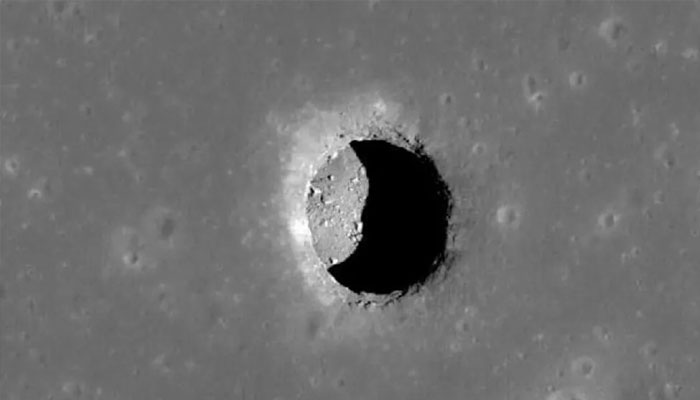
Astronomers say that they have found a lunar cave which can be up to 100m deep and may be suitable for creating humanity’s permanent home on the Moon.
This cave is one of perhaps hundreds buried in an ‘underground, unexplored country’, researchers have noted. Earth’s nations are now competing to build structures on the Moon which require shielding from radiation, cold temperatures, and space weather.
In the interview with BBC News, Helen Sharman – the first British astronaut in space – said that because a cave was a good place for a base, humans might be able to live in the pits on the Moon within the next 20-30 years.
Nonetheless, because of the depth of the well the astronauts might have to rappel or jet packs or a lift. The cave was discovered by Lorenzo Bruzzone and Leonardo Carrer from the University of Trento in Italy, using radar to scan the pitching opening of a pit on Mars’ Mare Tranquillitatis, visible from Earth and the landing point of Apollo 11.
It contains operations on the Moon’s surface, such as a skylight; walls that are vertical and overhanging; and a floor that is inclined and may also continue under a greater distance.
It was created millions of billions of years ago through the flow of lava. The most similar environment situated on Earth is the volcanic caves located in Lanzarote, Spain where the researchers had an opportunity to travel.
“It’s really exciting,” Prof Carrer said said. “When you make these discoveries and look at these images, you realise you’re the first person in the history of mankind to do so. ”They were able to discern the future application of the cave as a lunar base because of the extent of it.
The inner contour of the cave still has not been studied in detail, but to investigate it further, scientists plan to use such equipment as ground-penetrating radar, cameras or robots.








_updates-0.jpg)




